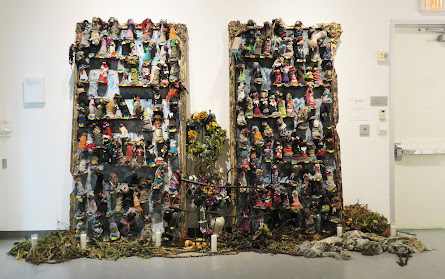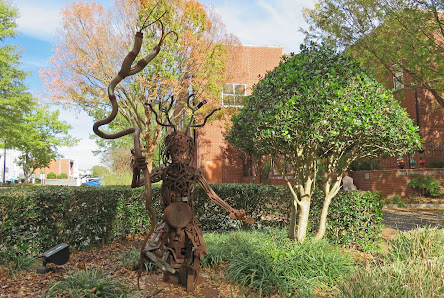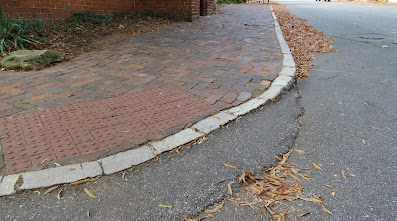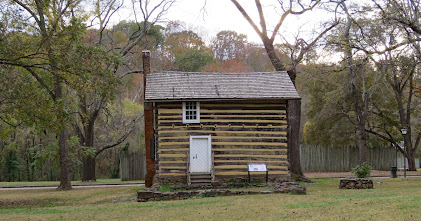Salem was established in 1766 by the Moravian church. All
the land was owned by the church and all residents had to be members of
the church until 1857 when the church divested control of the town. Many of the buildings and gardens of the original center city have been restored or reconstructed with eleven buildings featuring living history interpreters.
Old Salem which resembles a small Colonial Williamsburg is part of a residential neighborhood and therefore open to the public. Since the Old Salem website has no information about building accessibility we figured it would be essentially non-existent and not worth the price of the tickets but we could still go to the free visitor center and wander around on the streets.
The visitor center has exhibits about the Moravian church and the founding of Salem. There's also a exhibit about the small community of Happy Hill where freed slaves were permitted to live. Most of the original buildings were razed to build a housing project and US Highway 52.
The visitor center is accessible. A covered bridge crosses Old Salem Road and a long ADA compliant ramp goes down to street level. The sidewalks are brick and not in good condition. The terrain is hilly so even rolling/walking along the sidewalks for the six or so blocks of the historic district is difficult. A few of the buildings are designated as accessible but we did not notice any ramps.













































